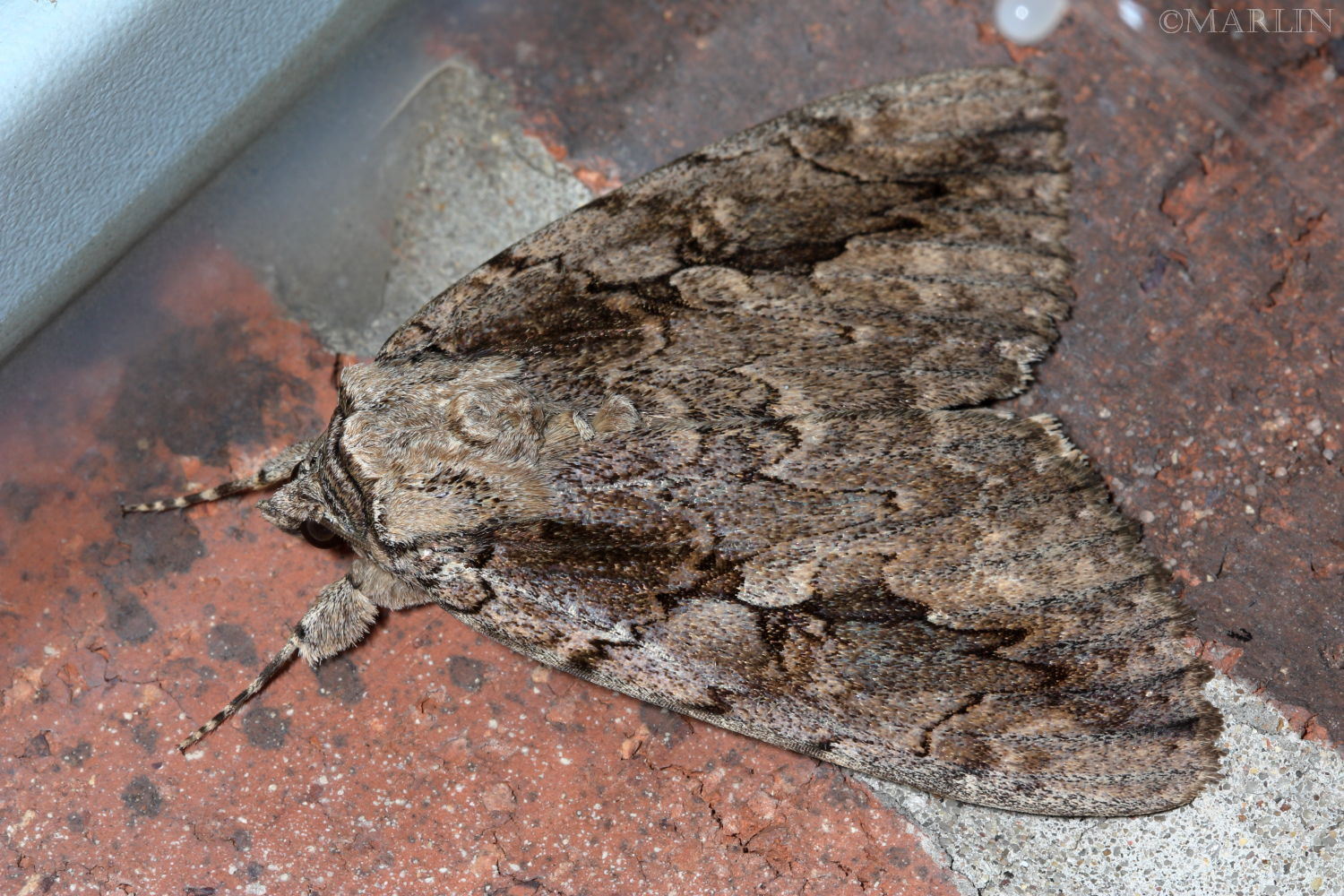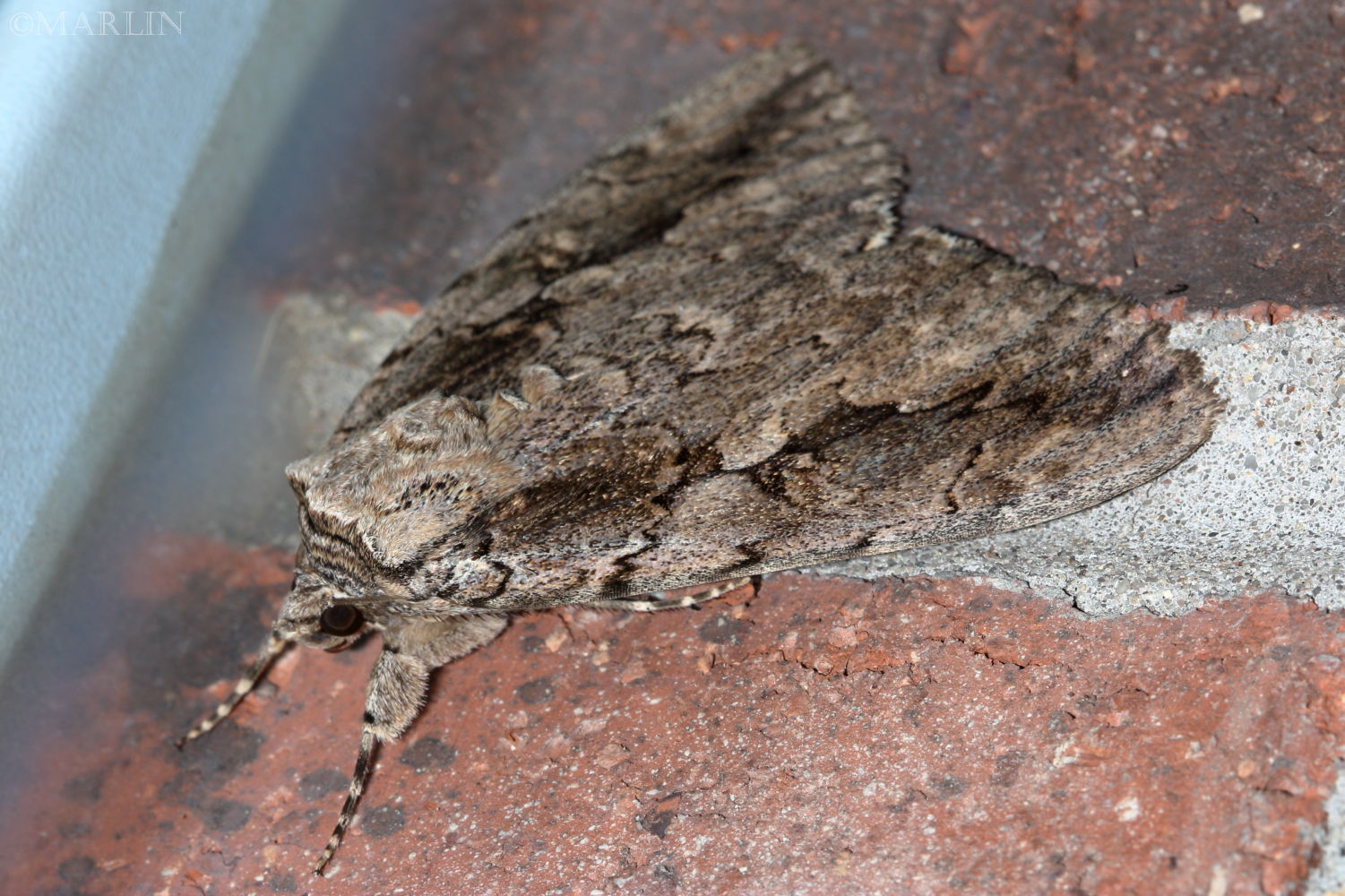Sweetheart Underwing Moth – Catocala amatrix
This huge (about 3″ across) moth got into my house one night and furiously flapped around for awhile before settling on, of all places, the box my camera came in. I took a few impromptu photos and then carefully cupped the moth in my hands and released it outdoors.
What a beautiful creature to come calling – but I could imagine this dark thing flapping madly about might be mistaken for a bat.
Underwing moths most often pose with their forewings held together over the back (below), hiding the boldly-colored underwings. The fanciful common names of moths in this genus (Sweetheart, darling, newlywed, the girlfriend, et al) apparently stems from the fact Carl Linnaeus himself named some of his earliest species in a female-loved-one / marriage theme, which later species authors continued. [1]
Underwings moth caterpillars feed on plants in the Family Salicaceae (willows, cottonwoods, poplars).


